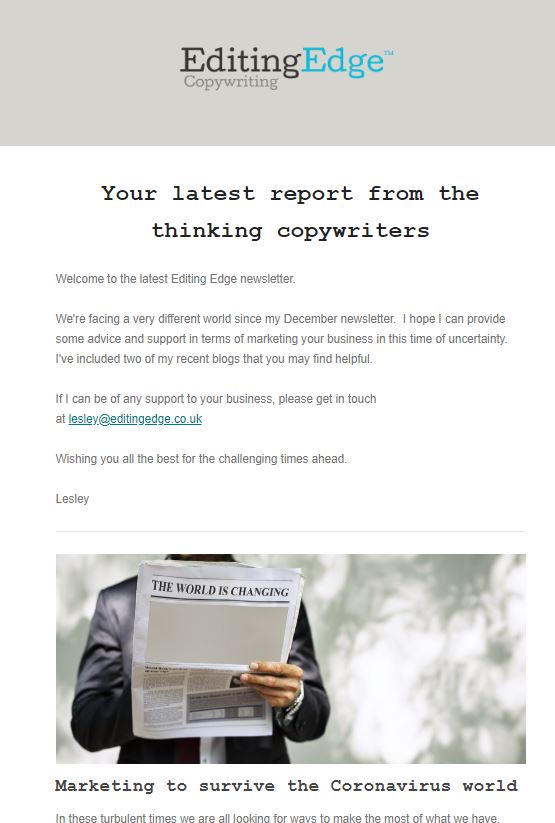Now, more than ever, it’s important to keep in touch with your clients and customers. COVID, Brexit, supply chain issues – all have contributed to tumultuous market changes over the last couple of years. Whether you are letting clients know you are open for business or are working hard to get essential supplies, newsletters are an invaluable way to keep those lines of communication and to help maintain the relationships you have built with your clients.
Newsletter writing tips
Newsletters have been around a long time, from the traditional paper version landing on your doormat to the e-newsletters that bombard our inbox. If you want your customers look forward to receiving your newsletter rather than consigning it to junk, you need to get the content and style right.
This is all the more important with GDPR, as people must positively opt-in to receive your newsletters. You need a strong reason to persuade them to give their email address – and you can lure them by providing inspiring, useful content rather than the usual drivel they want to avoid.
Here are 10 pointers for creating an engaging newsletter.
1. Be clear on why you are sending your emails
Define your goals. Who are you sending your newsletters to and what are you trying to achieve by doing that? A well-planned newsletter can help you to:
- Remind your customers that you exist
- Boost sales
- Build your brand
- Increase customer loyalty
- Raise awareness of your offering
- Encourage traffic to your website or shop
- Show your expertise
Having a goal in mind will dictate the style and content of your newsletter. If you want to increase your sales, send irresistible offers. If you want to establish expertise in your field, send quality articles.
If you want to see how a copywriter approaches it, in the words of Blue Peter, here’s one I did earlier:
Your latest report from the thinking copywriters
 2. Craft catchy headlines and subject lines
2. Craft catchy headlines and subject lines
Grab the reader with the headline. Give them a reason to open it and read it straight away.
3. Keep it punchy
Keep it simple and short. People don’t have time to read reams of text.
Don’t cram your newsletters with too much information and too many different articles. After all, the aim of the email is to build relationships / get more business so you want to get them to your website if possible.
My advice would be to provide some form of a teaser to whet their appetite, with a “read more” link to your website.
4. Style
Is your tone of voice right for your audience? Keep it friendly if that’s appropriate and consider greeting your readers by their first name if your newsletter software allows it, as this will increase open rates.
Keep sentences short – 20 words or less – and avoid the passive voice, which can make your text difficult to read.
5. Write content worth reading
Well, newsletters are to communicate news. You need to make sure the news you share is valuable to your readers. Give them tips and advice, not just your adverts.
There are a couple of questions that help determine whether the content you want to share has value:
- Timing – did it happen recently?
- Relevance – is it something your audience is interested in and finds useful?
6. Do not sell aggressively
Keep a 90%/10% ratio. People don’t want a barrage of sales material. As soon as they feel you push your product too hard they will unsubscribe. 10% of promotion is more than enough in newsletters.
7. Keep them regular
If people receive your newsletter and it’s been so long since the last one that they can barely remember you, it’s likely to be at the bottom of their reading list. On the other hand, if you set a rhythm that’s too frequent you may struggle to produce enough interesting content.
8. When to send
Do you want to catch people at the start of the week as they plan their diaries and need inspiration or thought leadership? Or maybe at the weekend when they are thinking about leisure? Do some online research for your industry to determine the best time to send. You can always experiment by sending at different times to see what works best.
9. Be GDPR compliant
The GDPR (General Data Protection Regulation) came into force in 2018. People must give you their consent to use their personal data, so they must agree to receiving newsletters from you and you need evidence of this. This applies to all existing subscribers on your email list, not just new sign-ups.
10. And finally …
If you are stuck with a blank page and lack ideas for what to write, look for inspiration at newsletters you’ve received recently and online examples … or talk to a copywriter.


